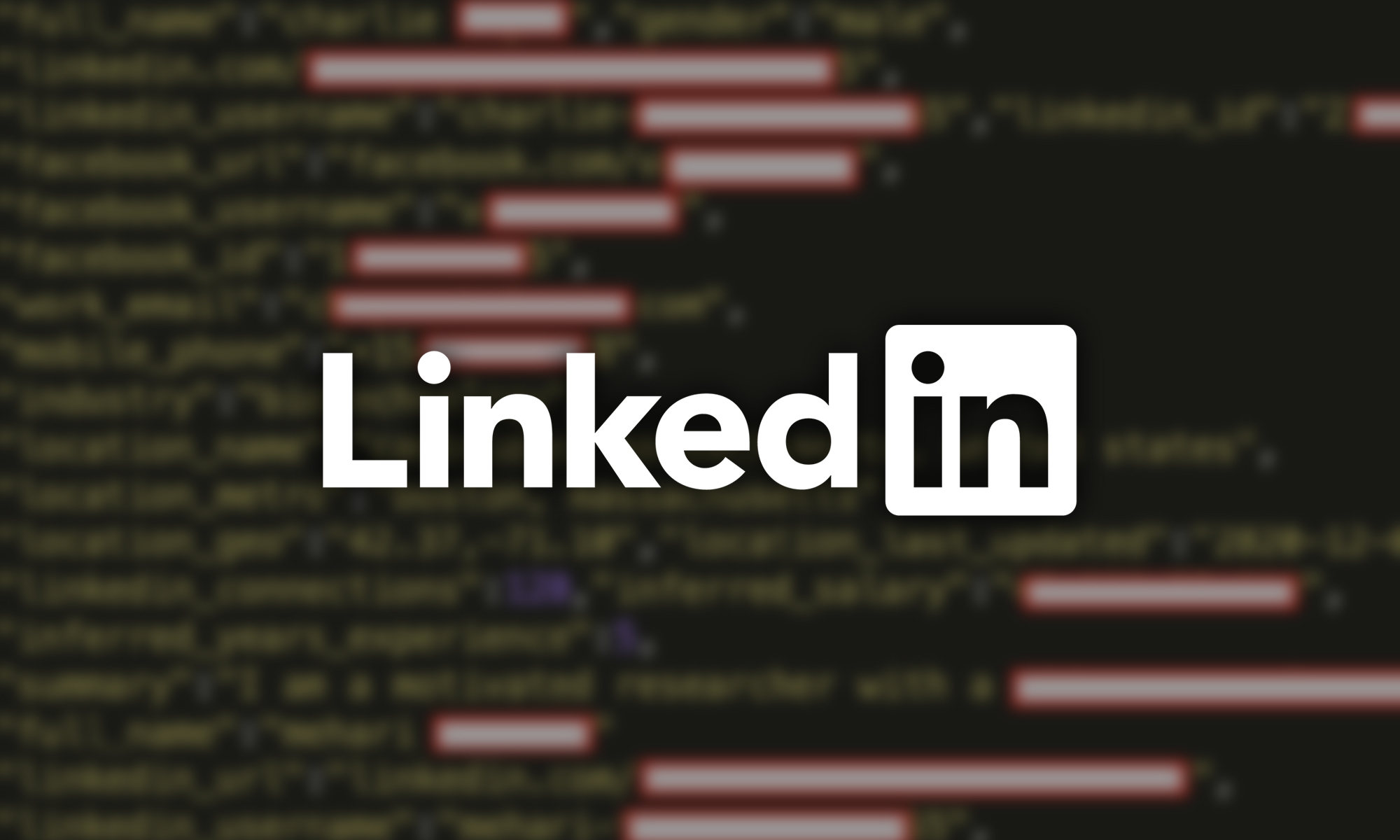News
Data Of 700 Million LinkedIn Users Is For Sale On The Dark Web
Who would pay for this information, you wonder? Spammers, phishers, and other cybercriminals are definitely the target audience here.

The security team at LinkedIn doesn’t get much rest lately. In April, 500 million of its user’s data was exposed by hackers, and the same data collection technique was apparently used by a dark web user called TomLiner, who is currently selling 700 million LinkedIn user records (92% of all LinkedIn users) in a convenient bundle for just $5,000.
The data collection technique in question is called scraping, which is the act of extracting useful information from a website. Since any public website can be scraped using readily available tools, it wouldn’t be correct to call this incident a breach, as LinkedIn quickly pointed out.
“While we’re still investigating this issue, our initial analysis indicates that the dataset includes information scraped from LinkedIn as well as information obtained from other sources,” said Leonna Spilman, Corporate Communications Manager at LinkedIn. “This was not a LinkedIn data breach, and our investigation has determined that no private LinkedIn member data was exposed.”
So, what data has been exposed? Fortunately, no passwords or dates of birth. Here’s what a sample of one million records published by the scrapper contains:
- Email addresses
- Full names
- Phone numbers
- Physical addresses
- Geolocation records
- LinkedIn username and profile URL
- Personal and professional experience/background
- Genders
- Other social media accounts and usernames
Who would pay $5,000 for this information, you wonder? Spammers, phishers, and other cybercriminals are definitely the target audience here.
Also Read: Is Your Phone Hacked? How To Find Out & Protect Yourself
Having all this information in one place makes it much easier for them to create detailed profiles of their potential victims and launch sophisticated targeted attacks against them. Sure, they could simply scape it by themselves using LinkedIn’s own API (application program interface) just like the seller did, but cybercrime can be so profitable that their time is often more valuable.
If you have a LinkedIn account, then you should assume that your personal information is included in the dataset and act accordingly. More specifically, you should enable multi-factor authentication (MFA) and avoid replying to email messages from unknown senders, let alone opening any attachments they may contain.
News
Google Releases Veo 2 AI Video Tool To MENA Users
The state-of-the-art video generation model is now available in Gemini, offering realistic AI-generated videos with better physics, motion, and detail.

Starting today, users of Gemini Advanced in the MENA region — and globally — can tap into Veo 2, Google’s next-generation video model.
Originally unveiled in 2024, Veo 2 has now been fully integrated into Gemini, supporting multiple languages including Arabic and English. The rollout now brings Google’s most advanced video AI directly into the hands of everyday users.
Veo 2 builds on the foundations of its predecessor with a more sophisticated understanding of the physical world. It’s designed to produce high-fidelity video content with cinematic detail, realistic motion, and greater visual consistency across a wide range of subjects and styles. Whether recreating natural landscapes, human interactions, or stylized environments, the model is capable of interpreting and translating written prompts into eight-second 720p videos that feel almost handcrafted.
Users can generate content directly through the Gemini platform — either via the web or mobile apps. The experience is pretty straightforward: users enter a text-based prompt, and Veo 2 returns a video in 16:9 landscape format, delivered as an MP4 file. These aren’t just generic clips — they can reflect creative, abstract, or highly specific scenarios, making the tool especially useful for content creators, marketers, or anyone experimenting with visual storytelling.
Also Read: Getting Started With Google Gemini: A Beginner’s Guide
To ensure transparency, each video is embedded with SynthID — a digital watermark developed by Google’s DeepMind. The watermark is invisible to the human eye but persists across editing, compression, and sharing. It identifies the video as AI-generated, addressing concerns around misinformation and media authenticity.
While Veo 2 is still in its early phases of public rollout, the technology is part of a broader push by Google to democratize advanced AI tools. With text-to-image, code generation, and now video creation integrated into Gemini, Google is positioning the platform as a full-spectrum creative assistant.
Access to Veo 2 starts today and will continue expanding in the coming weeks. Interested users can try it out at gemini.google.com or through the Gemini app on Android and iOS.

























